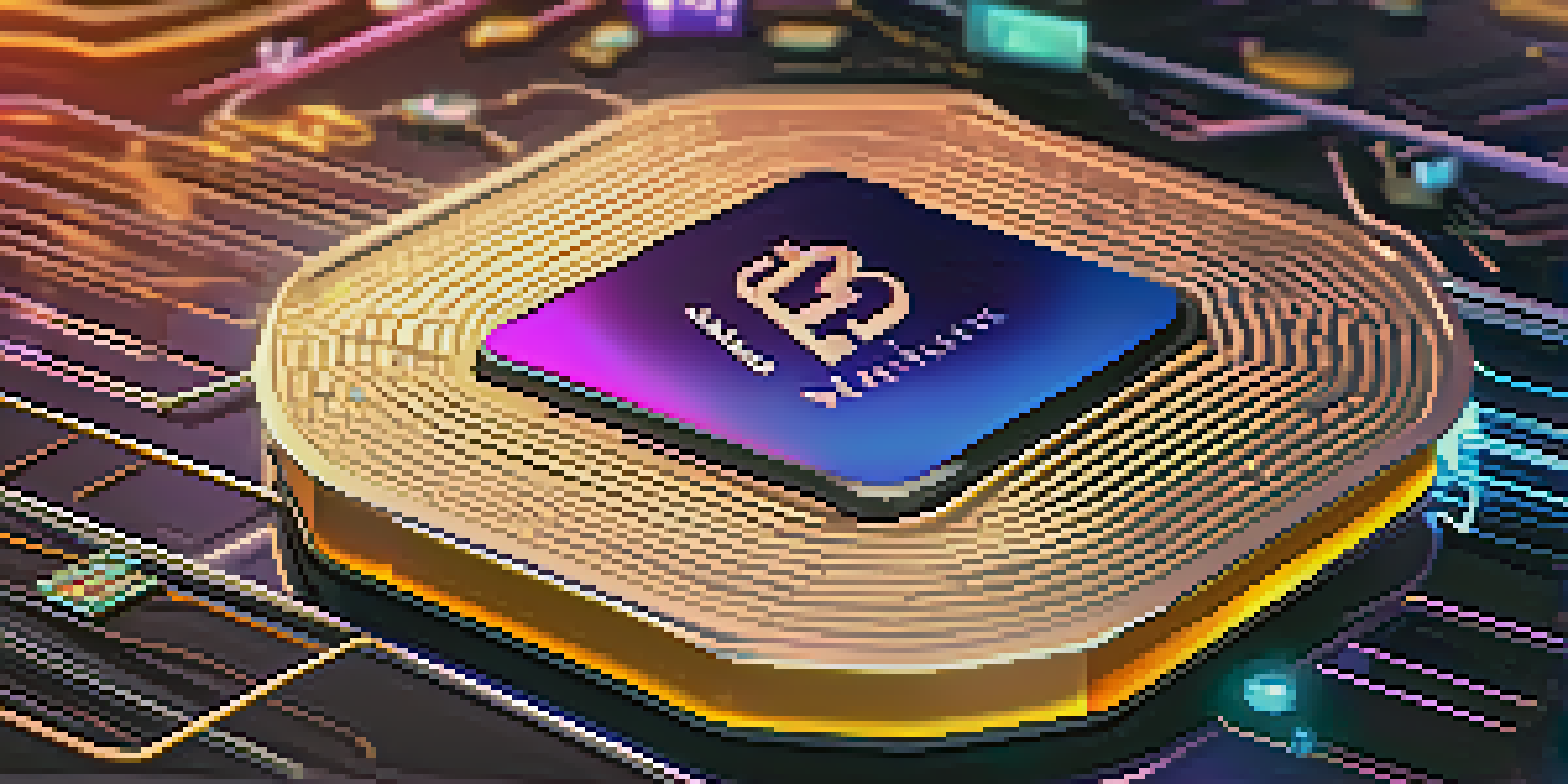Preparing for a Fork: What Users Need to Know

Understanding What a Fork Is in Cryptocurrency
A fork in cryptocurrency is essentially a change or upgrade in the protocol of a blockchain. Think of it like a road splitting into two paths; each path represents a different version of the blockchain. Forks can be categorized into two types: hard forks and soft forks, with hard forks creating a permanent divergence, while soft forks are backward-compatible. Understanding these differences is crucial for users to navigate potential changes effectively.
In the world of cryptocurrencies, a fork is not just a split; it's a chance for innovation and improvement.
Hard forks may result in the creation of a new cryptocurrency, as seen in Bitcoin and Bitcoin Cash. This can lead to confusion among users, especially if they are unsure of how it affects their existing assets. Soft forks, on the other hand, usually require less user intervention since they maintain compatibility with the original blockchain. Grasping these concepts allows users to make informed decisions when a fork is on the horizon.
To summarize, knowing what a fork is and its implications helps users prepare for the changes that may arise. It’s essential to stay informed about the specific fork in question, as each can carry unique consequences for your assets. In the world of cryptocurrency, knowledge is power, especially when navigating the complexities of forks.
Why Forks Occur: The Driving Factors
Forks can happen for various reasons, often driven by community disagreements or the need for technological improvements. For instance, a group of developers may believe that the current blockchain protocol is outdated and requires enhancements to improve its functionality. This disagreement can lead to a hard fork, where a split occurs to implement the desired changes.

Another reason for forks can be security concerns; if vulnerabilities are discovered, a fork may be necessary to patch these issues effectively. In such cases, the community must rally together to decide the best course of action. This illustrates the democratic nature of blockchain technology, where users have a say in the future direction of the cryptocurrency.
Understanding Forks in Crypto
A fork represents a change in blockchain protocol, which can significantly affect users' assets and investment strategies.
Ultimately, understanding the motivations behind forks can help users anticipate potential changes in their investments. Awareness of these factors can also guide users in determining which version of the blockchain they wish to support. Staying engaged with the community and the latest developments ensures that users are equipped to handle forks confidently.
The Importance of Staying Informed
In the fast-paced world of cryptocurrency, staying informed is vital, especially when a fork is announced. Information can come from various sources, including social media, official project websites, and community forums. Following reliable channels ensures you receive accurate updates and can make timely decisions regarding your assets.
Knowledge is power, especially in the fast-paced realm of cryptocurrency, where every decision can impact your assets.
Participating in community discussions can also provide insights into the sentiments surrounding a fork. Engaging with other users helps you gauge the general consensus and find out how others are preparing for the change. This shared knowledge can be invaluable when determining your course of action.
Lastly, consider subscribing to newsletters or alerts from reputable cryptocurrency news sites. These resources often provide summaries of upcoming forks and their implications, helping you stay ahead of the curve. By being proactive, you can navigate the complexities of forks with confidence and clarity.
Assessing the Impact of a Fork on Your Assets
When a fork occurs, it's crucial to evaluate how it might affect your existing cryptocurrency holdings. Different forks can lead to varying outcomes; for example, you may receive an equivalent amount of the new cryptocurrency after a hard fork. Understanding the mechanics of the fork can help you determine whether to hold, sell, or exchange your assets for the new version.
Additionally, consider the potential for price volatility during and after a fork. The uncertainty surrounding a split can lead to fluctuations in value, impacting your investment strategy. Monitoring market trends before, during, and after the fork will equip you to make informed decisions.
Stay Informed About Changes
Keeping up with community discussions and reliable news sources is essential for navigating the implications of a fork.
In essence, being prepared involves thorough research and a clear understanding of how a fork might influence your assets. By evaluating the situation critically, you can develop a strategy that aligns with your financial goals. Ultimately, informed decisions can help mitigate risks and capitalize on opportunities that arise from forks.
How to Secure Your Cryptocurrency Before a Fork
As a user, ensuring the security of your cryptocurrency assets before a fork is essential. One of the first steps is to store your assets in a secure wallet, preferably one that gives you full control of your private keys. Hardware wallets, for example, provide a higher level of security compared to exchanges, protecting your assets from potential hacks.
Additionally, it's vital to back up your wallet and keep your recovery phrases safe. In the event of a fork, having access to your wallet can ensure you don't miss out on receiving any new tokens or coins generated from the split. Taking these precautions can provide peace of mind as you navigate the upcoming changes.
Finally, stay vigilant about phishing attempts and scams that may arise during a fork. Fraudsters often take advantage of the uncertainty surrounding these events, so always verify the sources of any information before acting. By prioritizing security, you can safeguard your investments against potential threats.
Considerations for Trading During a Fork
Trading during a fork can be a double-edged sword; while it presents opportunities, it also carries risks. Market volatility is often heightened during these events, creating potential for significant price swings. As a trader, it’s essential to weigh these risks against your investment strategy and decide if it’s the right time to enter or exit positions.
Another consideration is the timing of trades, as forks can create uncertainty about the future value of assets. Some traders may choose to sell before the fork to secure profits, while others may hold in anticipation of the new token's value. It's crucial to have a clear plan and set boundaries for your trading activities during this period.
Secure Your Assets Before a Fork
Prioritizing the security of your cryptocurrency, such as using secure wallets and backing up recovery phrases, is crucial during a fork.
Ultimately, successful trading during a fork requires careful analysis and a solid understanding of market dynamics. By staying informed and developing a strategy that aligns with your goals, you can navigate these situations effectively. Remember, it’s okay to sit on the sidelines if the market feels too unpredictable.
Post-Fork: What to Do Next
Once a fork has occurred, it’s time to reassess your strategy and evaluate the outcomes. Take a moment to review the new assets you may have received and their current market values. Knowing whether to hold, sell, or trade these new tokens can significantly impact your overall investment strategy moving forward.
Additionally, continue to monitor the community's response to the fork. Gathering insights from forums and news sources can help you understand the longer-term implications of the fork and how other users are reacting. This information can guide your decisions on whether to support the new version of the blockchain or stick with the original.

Lastly, ensure that all your security measures remain intact. After a fork, some users may feel complacent, but it’s crucial to stay vigilant against potential threats. By maintaining a proactive approach, you can adapt to the evolving landscape of cryptocurrency while safeguarding your investments.